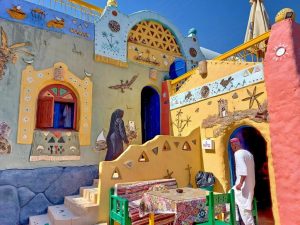King Nar-Mer, the founder of the first dynasty and the unifier of Egypt’s two regions, Upper Egypt and Lower Egypt, built Egypt’s very early capital city. The city was called from the name of King Pipi’s pyramid, Mn-Nefer, which means “beautiful and stable,” and was subsequently dubbed “Memphis” by the Greeks who visited Egypt. The Memphis artifacts are currently housed in a small open-air museum in the current Meet-Rahina village. The city formerly had several temples, the largest of which was the temple of Ptah, the northern capital’s principal god.

Visitors may now only see the remains of Memphis at a museum that contains the colossus Ramses II, the new kingdom Alabaster sphinx, and a few other artifacts.

Memphis’ Open Air Museum is one of Egypt’s “must visit” attractions! The journey from Cairo takes 45 minutes, the museum is only 20 kilometers south, and the admission cost is extremely low.
Throughout the Old Kingdom, Memphis was the capital of Ancient Egypt. Many Egyptologists think that Memphis was once a very large city because of the enormous number of necropolises (old cemeteries) connected with it, despite the fact that there is no archaeological evidence to support this claim, even now.










